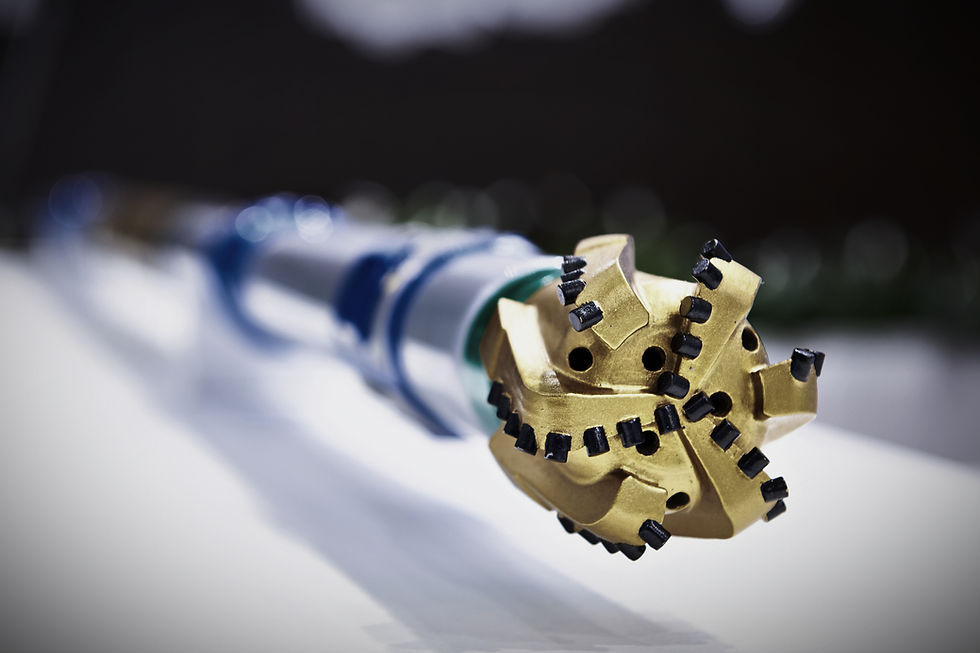Mitigating Tariff Exposure for Advanced Downhole Oil & Gas Equipment
- Paul Morrell

- Apr 20
- 4 min read
Updated: May 14

The United States’ latest tariff escalation - most notably the 145% rate imposed on imports from China - marks a decisive shift in trade policy, driven by intensifying geopolitical and economic pressures. For energy and oilfield technology companies sourcing globally integrated systems, these tariffs present a material threat to capital efficiency, especially for components with highly consolidated supply chains like advanced downhole drilling systems.
Drawing on real-world analysis, this brief outlines how these tariff changes affect capital costs for a representative advanced downhole drilling system and provides a framework for mitigation strategies. Given the fluidity of the current trade environment, it is advisable to prepare mitigation pathways now, while maintaining executional flexibility in the medium term.
Advanced Downhole Drilling System: Pre & Post-Tariff Impact Assessment
Under the current tariff regime, the total landed cost of an advanced downhole drilling system in the U.S. has risen significantly due to component-level import duties. The table below outlines the cost structure before and after tariffs, highlighting which categories are most affected and by how much.
This analysis reflects a representative high-specification tool and is intended to illustrate typical tariff exposure - not to represent the full diversity of downhole equipment types or configurations:
Capital Planning Complexity
The imposition of steep and highly differentiated tariffs across component categories introduces a new layer of uncertainty for capital planning. What was once a straightforward cost structure for high-spec drilling tools is now subject to volatility based not just on commodity markets or supplier pricing, but on evolving international trade policy. Budgeting for multi-unit deployments must now include contingency allowances for duty rates, eligibility for recovery mechanisms like drawback, and lead-time extensions tied to shifting supply routes. This complexity places a premium on agility in sourcing, engineering flexibility, and cross-functional collaboration between procurement, compliance, and finance teams.
Develop a Mitigation Plan, but Keep Your Powder Dry
To protect cost structures without reacting prematurely to a volatile regulatory landscape, we recommend preparing a set of tactical levers that can be pulled if and when tariffs stabilize or harden. These measures position supply chains for responsiveness while minimizing disruption:
1. Alternate Country Sourcing
Identify and prequalify alternative suppliers in untariffed or FTA-aligned regions:
Fasteners: Vietnam, Taiwan, or Mexico.
Seals/O-Rings: Germany or Italy.
Electrical Components: Malaysia or Germany
Action: Complete technical vetting and vendor onboarding; defer PO commitments pending tariff trajectory.
2. Duty Drawback and FTZ Readiness
Model and prepare workflows for Foreign Trade Zone assembly and duty drawback claims. Drawback allows for up to 99% recovery of duties on components incorporated into products that are exported. While Section 232 tariffs (e.g., Canadian and South African metals) are ineligible, reciprocal tariffs on Chinese-origin inputs (e.g., fasteners, electrical components, seals) are recoverable, potentially reducing net cost impact from 18.83% to approximately 6.5% under current rules.
Action: Conduct a cost-benefit analysis and initiate FTZ designation or drawback filing capabilities without operational rollout.
3. Dual-Source Engineering Options
Evaluate and develop design modifications that enable greater sourcing flexibility - for example, allowing components to be manufactured with alternative materials or threading configurations. These adaptations can reduce supplier dependency and provide leverage when navigating tariff-heavy regions.
Action: Review BOMs for dual-sourcing feasibility and document design variations for rapid activation.
4. Tariff Classification Audit
Conduct a comprehensive review of HS code assignments for imported components. In some cases, reclassification or clarification through customs rulings may significantly reduce applicable tariff rates or identify eligibility for exemptions.
Action: Engage trade counsel or a customs specialist to perform advance ruling reviews for high-impact SKUs.
5. Scenario-Based Inventory Staging
Look at ways to adjust your inventory approach to match tariff exposure. This could mean bringing in more stock of high-tariff items ahead of time or creating a plan to buy in stages depending on how trade policy evolves.
Action: Build a tactical plan that outlines when to increase or hold inventory based on changes in tariffs or supplier risk.
Final Thoughts
The current tariff regime poses clear financial headwinds, but the policy landscape remains fluid. Rather than triggering structural supply chain shifts prematurely, a measured strategic approach is recommended: architect mitigation plans now, monitor geopolitical developments closely, and activate responsive levers only when directional certainty emerges. This approach balances cost control with operational continuity, ensuring you remain agile in the face of an evolving global trade environment.
May 2025 Update
Since our last analysis, a pivotal U.S.-China trade agreement on May 11, 2025, has slashed tariffs on Chinese imports from 145% to a more manageable 30% for 90 days, effective May 14, 2025. This temporary relief significantly reduces the cost burden on advanced downhole drilling equipment production in the USA, dropping the tariff impact from 18.83% to 8.84% ($163,262 vs. $150,000 pre-tariff). For finished equipment destined for export, duty drawback recovers $3,823 of Chinese tariffs, netting a cost of $159,438—just 6.29% above pre-tariff. However, Section 232 tariffs on Canadian nickel and South African chromium ($9,580) remain ineligible for drawback, underscoring the need for strategic sourcing shifts. With this 90-day window closing August 12, 2025, now’s the time to explore EU/UK suppliers or local Inconel sources to brace for potential tariff hikes. The updated table below reflects these changes, offering a fresh look at costs and opportunities.



Comments